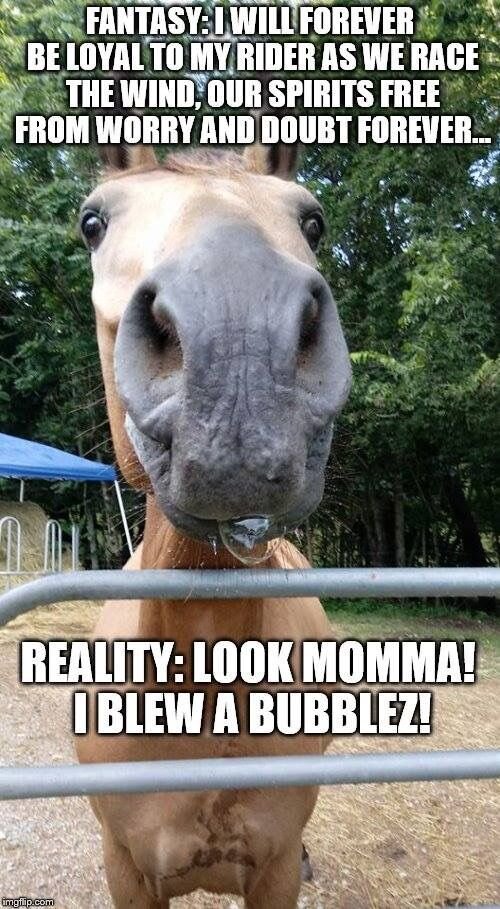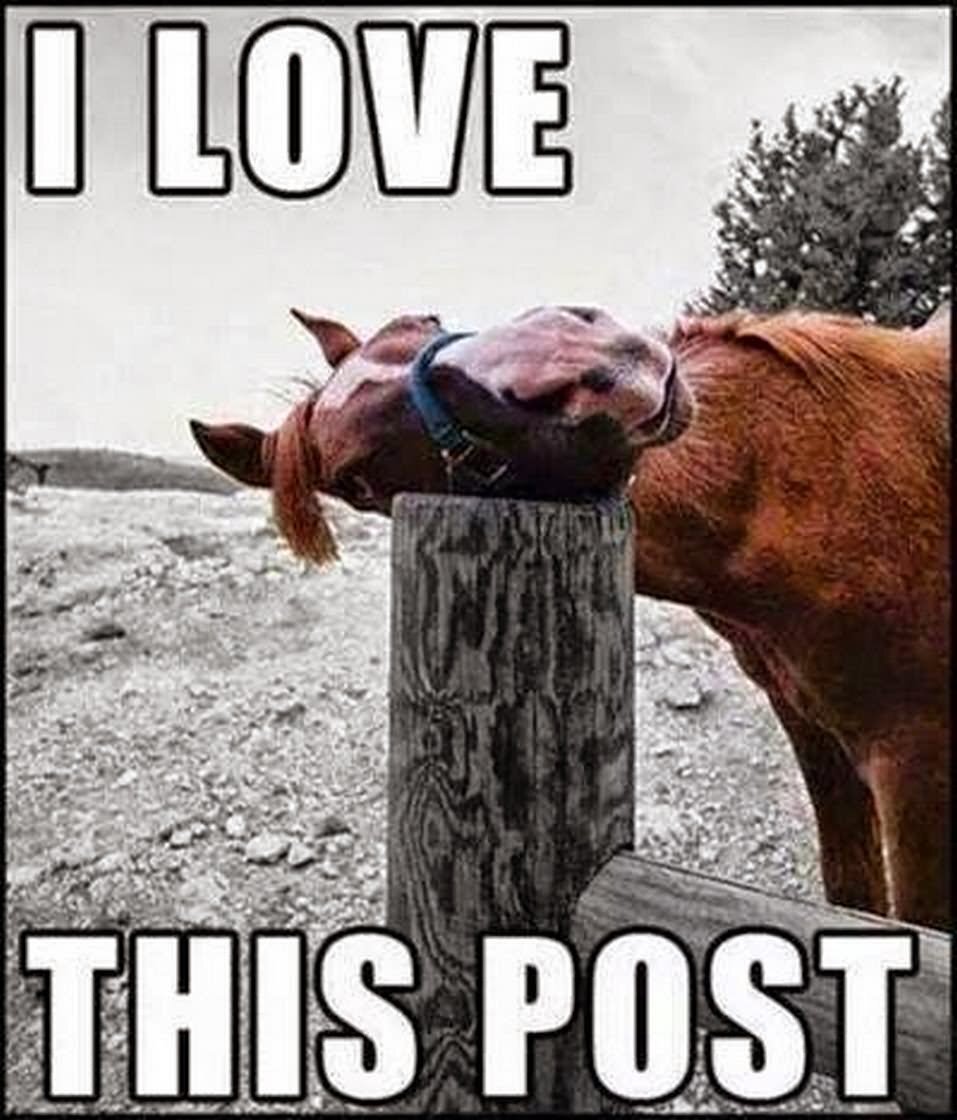Product of the Month
Katie and Sarah feature and review different products & tools each month for your horse.
April 2019
Horze Fly Mask
I have to say that over the years that Horze has been available I have come to really like and trust the brand. Although they are repeatable the cheapest on the market they don’t skimp on the details, often going the little extra mile on design and fit, which I have found again when I got Fitty’s new fly mask.
Fitty is prone to itch, so I was drawn to the fact that it comes with the ears built in and doesn’t just sit behind the ear but has extra material which would allow it to meet where his rug ends. It is a lovely fit and sits nicely around his check bones. It has 2 straps of double Velcro which holds it securely in place and has meant that he hasn’t yet turfed it in the paddock - as he likes to do!
Fitty is yet to ditch the mask, so big thumbs up!
It comes with a few extra bonuses:
UV protection
Weather resistance
Opening at the pole for horses that have a lush forelock (not a problem I have with fitty unfortunately)
The downside:
Fitty has come up with a bit of a rub mark on his nose where the bottom of it sits. I am playing with how tight I do it up to see if that is the cause.
Once again I am stoked with my Horze product for the price (not going to complain when he destroys it and it has to be replaced), fit and quality and Fitty is keeping the flies out of his eyes because he can’t get this one off!!
Find out more here!
—Katie
We’d love to here about your favourite product for review! Pop a comment below or send us an email!
March 2019
Dark Selections Customise Your Own Mattes Saddle Pad
After spending hours creating numerous coordinating saddle pads, I just had to share the link for this product.
The Mattes Saddle Pad is 100% customisable to colour, trim, additions like fur trim or saddle fixing, and you may, like me, find yourself spending hours creating your own perfect colour branding for your horse.
What’s to like?
Complete customisation, even to the logo
44 colours to mix and match
Correction system option allows you to correct irregularities in your horses build or adjust the fit for a green horses rapidly changing form
A saddle fix option that not only helps prevent slippage but also lifts the pad off the spine, allowing for complete freedom in movement
What’s not to like?
Beside the hours you will spend creating the perfect colour combination, the price quickly adds up with each advancement. But hey - some people spend over $150 on shoes with a beer brand on them - at least the saddle pad won’t get you laughed out of the arena.
Create your own custom saddle pad by clicking here.
We’d love to here about your favourite product for review! Pop a comment below or send us an email!
EMERGENCY! What To Do In Case Of Flooding
What’s your emergency plan for floods?
What is your flood plan?
Floods are one of the more common natural disasters faced by horse owners. It is estimated that the chance of flooding in flood-plain regions, where a lot of paddocks are, is approximately 1% per year – or 30% chance for the average mortgage time-frame.
Forward planning can greatly reduce the likelihood of emergency evacuation, injury, illness or death of your horse.
There are 2 types of flooding that can occur:
Slow-rising floods: generally occur when a river or water source rises slowly, generally fed from upstream, and can be predicted to reach a certain level
Flash-flooding: occur suddenly when there is a large deluge of rain, melting of icecaps, or the breaking of a dam wall or levee. It is harder to predict the level the flood will rise to as there is little time for calculations or to get alerts out.
Here is a list of actions to consider for your emergency plan:
Prepare your emergency plan in advance
Become familiar with the area, including locations or rivers, creeks, drainage and flooding areas
Have an evacuation plan – whether it’s high ground paddocks, a friends paddock, or the local pony club grounds
Plan to be self-reliant for approximately 3 days – both with your and horses feed, in case you are both cut off from access to services
Have your emergency kit prepared
Have your horses well documented, including markings and brand, for identification purposes
Consider ways to identify your horse should they escape their safe region or washed away in water, including id tags braided into manes or on head collars, or telephone numbers written with Niko on hoofs, or safe body paint (more likely to show on greys or pale markings).
Have an emergency stash of feed and water kept in your float or truck – feed will often be depleted quickly at evacuation centres
Ensure your horse is well trained to be floated so if flood strikes the evacuation is less stressful
If you have to evacuate and leave your horse behind, ensure they are not confined in stables or small yards and have an easy escape route. Horses can swim and can tolerate water up to the belly for periods of time. Leave feed accessible above the ground for the time period you may have to leave.
What is your emergency plan in case of flood? Comment below!
Could a Vaccine be the Answer for Itch?
Is your horse over-sensitive to insect bites? You need to read this!
Up to 60% of horses in Australia suffer with insect-bite hypersensitivity, according to Kentucky Equine Research.
Yet we still lack a complete answer to this problem.
Horses with insect-bite hypersensitivity often present with signs including hair loss, thickening of the skin, weeping skin and ulceration of the skin, as a result of an over-reaction of the immune response. Infections may occur as a secondary result of the scratching and biting of those inflamed areas.
Could we finally have an answer to insect-bite dermatitis?
Research has been conducted to see if a special type of desensitisation vaccine, which reduces the immune response in these horses that have an over-reactive immune response, will assist, and has had favourable results.
“The vaccine was well tolerated, did not reveal any safety concerns, and did successfully induce the production of antibodies to block the action of IL-5,” commented Dr Laura Petroski, B.V.M.S, a veterinarian for Kentucky Equine Research.
IL-5, or interleukin 5 is the key regulator of eosinophils, which are inflammatory cells involved in the immune response.
While this vaccine needs further testing and registration, hope is afoot for our horses with chronic dermatitis as a result of insect bites.
In the meantime, look to utilise supplements with Vitamin E or Omega 3’s, which both have been clinically proven to reduce inflammation due to allergic reactions, including insect bites. Also consider applying insect repellent regularly during the high risk periods.
Information sourced from Kentucky Equine Research. Study reference Fettelschoss-Gabriel, A., V. Fettelschoss, F. Thoms, et al. Treating insect-bite hypersensitivity in horses with active vaccination against IL-5. The Journal of Allergy and Clinical Immunology. In press.
A Breakthrough in the Treatment and Prevention of Laminitis
Research done by Queensland University of Technology has discovered a drug that may help prevent or treat laminitis in ponies and horses.
Laminitis: a common, painful and sometimes deadly disease.
Laminitis is a problem where the laminae of the hoof becomes inflammed, often affecting multiple hooves at the same time. There are many potential causes of laminitis, including obesity, insulin resistance, and ingestion of large quantities of high sugar feed. It is a painful disease that affects 1 in 5 horses and can result in euthanasia.
“QUT Professor Martin Sillence, from QUT's School of Earth, Environmental and Biological Sciences, said a new veterinary drug related to one used to treat human metabolic syndrome has been found to prevent laminitis in ponies with the equine version of metabolic syndrome. “
The team, lead by Prof. Sillence, found that when ponies and horses over-eat energy-dense pastures or feeds, it leads to a large release of glucose. This results in their pancreas over-producing insulin, creating insulin toxicity which impacts the connective tissue in the hooves, resulting in laminitis.
Controlled trials have been performed in Queensland and more clinical trials are taking place in Europe, so hopefully we will see this medication available soon.
To read more about this, click on the link in the source citation.
SOURCE CITATION: Queensland University of Technology. "Giddy up: Help for plump ponies is fast on its way: Researchers have found a drug that prevents laminitis in ponies." ScienceDaily. ScienceDaily, 26 September 2018. <www.sciencedaily.com/releases/2018/09/180926110933.htm>
Biosecurity Warning - Anthrax
Biosecurity warning for anthrax outbreak July 2018
Biosecurity warning: Anthrax confirmed in Dirranbandi-St George area in early July 2018. Anthrax can infect horses that graze in contaminated fields or eat contaminated feeds.
Anthrax is a zoonotic disease (meaning it can spread to humans) that affects many grazing animals, predominantly cattle and sheep, but also horses, goats, pigs, dogs and people.
The bacteria Bacillus anthracis is responsible for this disease and can cause sudden death, weakness and blood-stained discharges after death. It is a category 1 biosecurity risk, and needs to be reported immediately.
Read more on the recent outbreak of anthrax and the biosecurity risk here:
https://www.business.qld.gov.au/industries/farms-fishing-forestry/agriculture/livestock/animal-welfare/pests-diseases-disorders/anthrax
https://www.vision6.com.au/em/message/email/view.php?id=1187063&a=10433&k=CWYft-M2_i2sb-H2ucvpGjQxx2jOtHxfSgro_nLVFro
Looking for more specific content?
Have a question you are seeking answers to? Send us a message and we will create a blog!





























